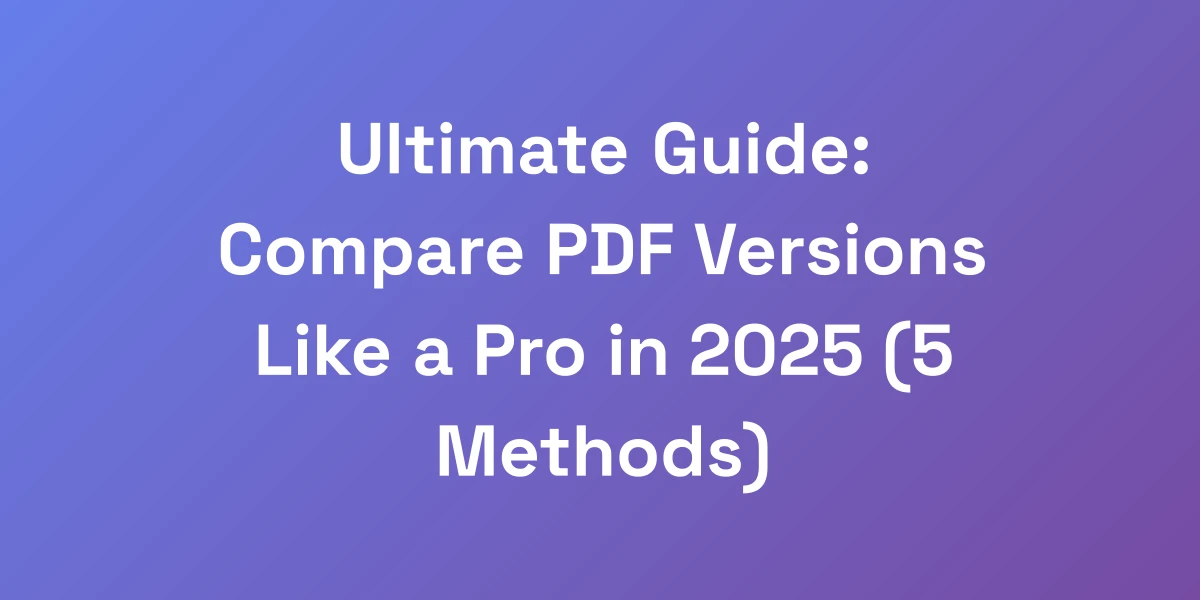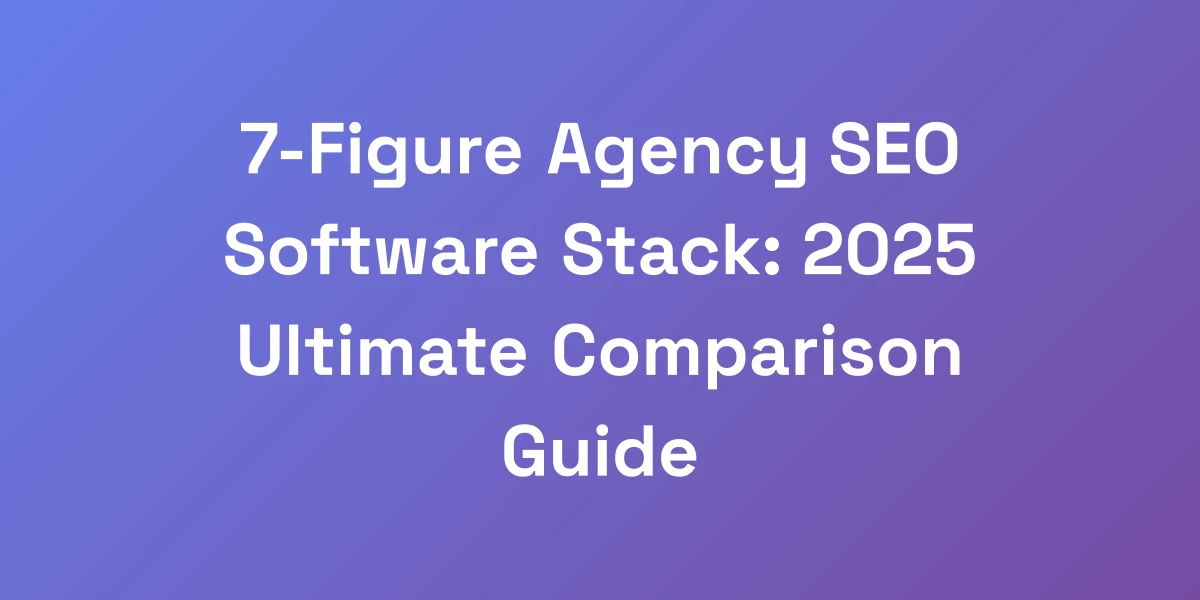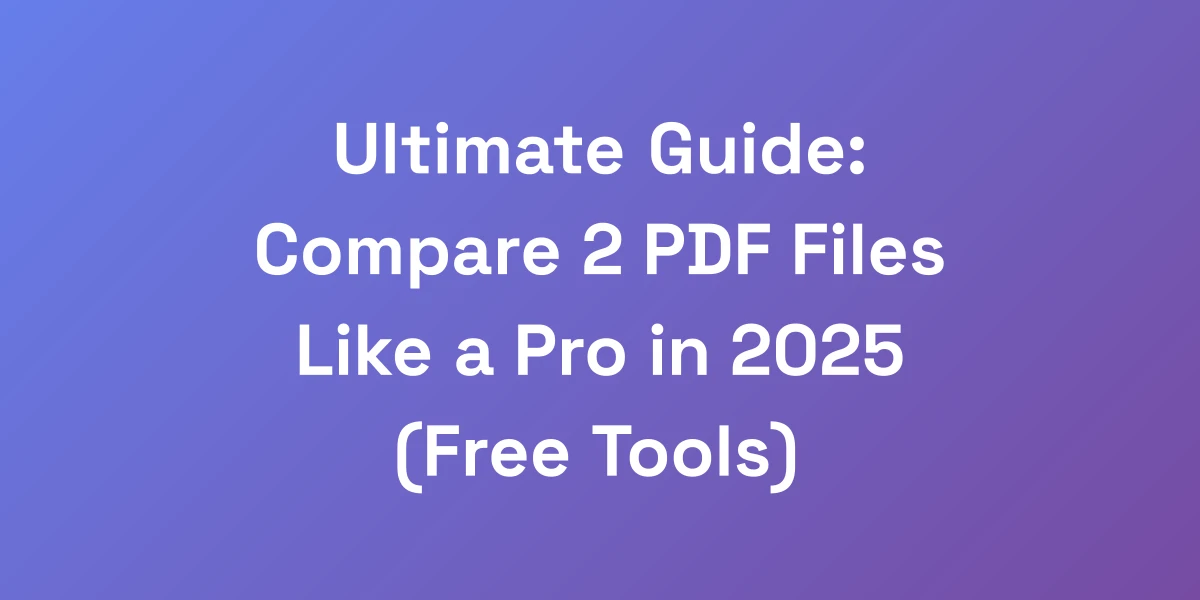
Ultimate Guide: Track SERP Features Like a 7-Figure SEO Pro (2025)
Mar 29, 2025 | By [email protected]
Ever wondered why some businesses seem to dominate Google’s first page while others struggle to make a dent? Let’s get real – it’s not just about ranking for the right keywords. The secret sauce lies in mastering SERP features. Imagine unlocking hidden traffic goldmines with just a few strategic tweaks, similar to strategies outlined in Digital Marketing for Small Businesses: A Complete 2024 Success Guide. Sounds like a dream, right? But it’s not.
We’ve seen countless SEO strategies fall flat because they overlook these powerful SERP elements. The landscape is shifting, and those who adapt will leave their competitors in the dust. Ready to transform your SEO game and track SERP features like a 7-figure pro? Let’s dive into the strategies that can turn your organic traffic into a revenue powerhouse.
Why Most SEOs Fail at SERP Feature Tracking (And How to Fix It)
Let me hit you with some truth: 90% of SEOs are leaving money on the table by ignoring SERP features. Here’s the deal – while everyone’s obsessing over basic keyword rankings, the real money is in dominating these golden SERP opportunities. We’ve seen businesses 3x their organic traffic just by strategically targeting and tracking the right SERP features. But here’s the kicker – it’s not about tracking everything; it’s about tracking what matters. Let us show you exactly how the top 1% of SEO professionals are leveraging SERP features to crush their competition.
The Hidden Cost of Ignoring SERP Features
Ignoring SERP features isn’t just a missed opportunity—it’s a *costly mistake*. Think about it: every time a featured snippet or a “People Also Ask” box appears for your target keyword, someone else is reeling in those clicks.
- Lost Visibility: Without optimizing for these features, your brand remains hidden in the shadow of competitors who snag the spotlight.
- Reduced CTR: Featured snippets can capture up to 42.9% CTR, leaving standard organic results with a mere 28%. That’s a significant drop in potential traffic.
- Missed Revenue: Lower visibility directly translates to fewer conversions and less revenue. It’s not just about traffic; it’s about the quality of traffic.
In essence, refusing to leverage SERP features is like leaving your storefront unlocked while others raid your profits.
Critical SERP Features That Actually Drive Revenue
Not all SERP features are created equal. Some can skyrocket your traffic and revenue, while others might not be worth your time. Here are the top performers:
- Featured Snippets: They can drive up to 42.9% CTR. By directly answering user queries, they establish your authority and direct traffic to your site.
- People Also Ask: Appearing in 64% of searches, these boxes increase your content’s exposure and provide additional entry points for users.
- Knowledge Panels: These can significantly boost your brand’s credibility and visibility, especially for local businesses and specific industries.
- Local Packs: Vital for businesses targeting specific geographies, they drive substantial local traffic and conversions.
Focusing on these features can dramatically shift your SEO strategy from basic ranking to comprehensive traffic and revenue generation.
The 80/20 Rule of SERP Feature Tracking
We live by the 80/20 rule: 80% of your results come from 20% of your efforts. The same applies to SERP feature tracking. Instead of spreading your resources thin, concentrate on the features that offer the highest ROI.
- Identify High-Impact Features: Focus on Featured Snippets and People Also Ask, as they have the highest CTR and prevalence.
- Optimize Accordingly: Tailor your content to fit the formats of these features, such as direct answers for snippets and comprehensive information for PAA boxes.
- Monitor and Adjust: Continuously track the performance of these features and refine your strategies based on data-driven insights.
By zeroing in on the most impactful features, you maximize your SEO efforts and achieve exponential growth.
Common SERP Tracking Mistakes That Kill ROI
Even seasoned SEOs stumble when it comes to tracking SERP features. Here are some pitfalls to avoid:
- Tracking Too Broadly: Trying to monitor every SERP feature dilutes your focus and wastes resources.
- Ignoring Data Analysis: Collecting data without proper analysis leads to missed opportunities and ineffective strategies.
- Neglecting Mobile Optimization: With mobile searches dominating, ignoring mobile SERP features can significantly impact your visibility.
- Failing to Update Content: SERP features evolve, and so should your content. Stagnant content can’t compete for dynamic SERP positions.
Steering clear of these mistakes ensures that your SERP tracking efforts translate into actual revenue gains.
Quick Wins for Immediate SERP Feature Visibility
Sometimes, you need fast results. Here are actionable tips to quickly enhance your SERP feature presence:
- Optimize for Featured Snippets: Structure your content with clear headings, bullet points, and concise answers to common questions.
- Target “People Also Ask” Questions: Incorporate relevant questions and answers into your content to increase your chances of appearing in PAA boxes.
- Implement Structured Data: Use schema markup to help search engines understand your content and increase the likelihood of appearing in rich snippets.
- Enhance Local SEO: Ensure your Google My Business profile is fully optimized and encourage customer reviews to dominate local packs.
These quick strategies can provide immediate boosts to your visibility, setting the stage for long-term growth.
The Ultimate SERP Feature Tracking Stack (That Actually Works)
Stop wasting time with overcomplicated tools that don’t move the needle. After spending over $500,000 on various SEO tools, we’ve narrowed it down to the exact stack that delivers results. These aren’t just tools – they’re profit-generating machines when used correctly. We’re going to show you the exact combination of tools that helped our clients generate millions in organic traffic value. The best part? You don’t need all of them – you just need the right ones for your specific situation.
Essential Tools for Enterprise-Level Tracking
When scaling your SERP feature tracking, enterprise-level tools are indispensable. They offer comprehensive features and robust data analysis capabilities.
- Semrush: Starting at $129.95/month, Semrush provides detailed rank tracking, competitor analysis, and organic traffic trends. It’s a top choice for its robust feature set and high-quality data.
- Ahrefs: With plans starting at $99/month, Ahrefs excels in backlink analysis, keyword research, and accurate rank tracking, making it essential for a thorough SEO strategy.
- AccuRanker: Known for its speed and accuracy, AccuRanker offers real-time data that’s crucial for enterprise-level decision-making.
These tools ensure that you have the insights needed to make informed, strategic decisions at scale.
Budget-Friendly Options That Deliver Results
Not every business has a massive SEO budget. Fortunately, there are powerful, budget-friendly tools that still pack a punch.
- Mangools (SERPWatcher): Starting at $29/month, Mangools offers daily updates, location-based results, and seamless integration with other Mangools tools, making it perfect for smaller businesses.
- Ubersuggest: With affordable plans, Ubersuggest provides keyword tracking, site audits, and competitive analysis, offering excellent value for cost-conscious marketers.
These tools provide essential features without breaking the bank, allowing you to optimize SERP features effectively on a budget.
Custom Tracking Solutions for Scaling Businesses
As your business grows, off-the-shelf tools might not meet all your needs. Custom tracking solutions can offer tailored insights and flexibility.
- Custom Dashboards: Develop dashboards using APIs from tools like Semrush and Ahrefs to integrate SERP feature data directly into your reporting systems.
- Scripting Automated Reports: Use scripts to automate the collection and analysis of SERP feature data, ensuring you always have up-to-date insights.
Custom solutions provide the adaptability and specificity needed to handle complex and evolving SEO requirements.
Tool Integration Strategies for Maximum Efficiency
Your tool stack should work together seamlessly to provide a comprehensive picture. Here’s how to integrate effectively:
- API Integration: Use APIs to connect different SEO tools, allowing data to flow effortlessly between platforms for unified analysis.
- Centralized Reporting: Consolidate data into a single reporting tool or dashboard to simplify tracking and decision-making.
- Workflow Automation: Automate repetitive tasks like data collection and reporting to save time and reduce errors.
Integration ensures that you’re not just collecting data but making it work for you in the most efficient way possible.
Advanced Features Worth Paying For (And Those to Skip)
Not all features are created equal. Invest in advanced functionalities that provide real value and skip the ones that don’t.
- Advanced Analytics: Features like predictive analytics and AI-powered insights can offer deeper understanding and foresight into SERP trends.
- Custom Reporting: Tailored reports that align with your specific business goals are invaluable for strategic planning.
- Real-Time Data: The ability to track SERP features in real-time can be a game-changer for staying ahead of competitors.
- Unnecessary Features: Avoid paying extra for features you’ll never use, like excessive integrations or redundant tools that don’t directly contribute to your goals.
Focus your investment on features that drive results and eliminate unnecessary expenses.
Advanced SERP Feature Tracking Strategies That 10x Your Results
Here’s where we separate the pros from the amateurs. These aren’t your basic “check your featured snippets” strategies. We’re talking about advanced tracking methodologies that have generated millions in revenue for our clients. We’re going to dive deep into the exact processes, automations, and frameworks that allow you to track SERP features at scale while maintaining laser-focused precision. This is the same system we’ve used to help businesses dominate their market through strategic SERP feature optimization.
Automated Tracking Workflows That Scale
Manual tracking is a thing of the past. Automation is your best friend when scaling SERP feature tracking. Here’s how to set up automated workflows:
- Automate Data Collection: Use tools like AccuRanker or custom scripts to automatically gather SERP feature data regularly.
- Set Up Alerts: Implement real-time alerts for significant changes in SERP features, allowing you to respond promptly.
- Schedule Regular Reports: Automate the generation and distribution of comprehensive SERP feature reports to keep your team informed.
Automation not only saves time but ensures that you never miss critical changes that could impact your SEO strategy. For agencies looking to implement effective marketing automation, see Marketing Automation for Agencies: The Ultimate Growth Blueprint 2024.
AI-Powered SERP Feature Analysis
Leverage AI to enhance your SERP feature tracking. AI can process vast amounts of data and identify SERP patterns that humans might miss. Additionally, incorporating autoblogging strategies can further enhance your content efforts as discussed in Autoblogging in 2025: The Science Behind AI Content That Google Loves.
- Predictive Analytics: Use AI to forecast future SERP feature trends based on historical data, allowing you to stay ahead of the curve.
- Content Optimization: Implement AI tools that analyze your content and suggest optimizations tailored to specific SERP features.
- Competitive Analysis: Employ AI to monitor your competitors’ SERP feature strategies and identify gaps in your own approach.
AI-driven analysis provides deeper insights and more accurate predictions, giving you a competitive edge in the SERP feature landscape.
Competitive Intelligence Through SERP Tracking
Understanding what your competitors are doing is crucial. Here’s how to use SERP tracking for competitive intelligence:
- Identify Competitor SERP Features: Track which SERP features your competitors are dominating and why.
- Analyze Their Content Strategies: Examine how competitors are optimizing their content to appear in featured snippets, PAA boxes, and other SERP features.
- Benchmark Performance: Compare your SERP feature performance against your competitors to identify areas for improvement.
Competitive intelligence allows you to refine your strategies based on what’s working in your industry, ensuring you stay ahead.
Local vs. Global SERP Feature Variations
SEO is not one-size-fits-all, especially when considering local versus global SERP features. Tailor your strategies accordingly:
- Local SEO Optimization: Focus on local SERP features like Google My Business and local packs by optimizing for location-based keywords and gathering local reviews.
- Global Reach: For global SERP features, ensure your content is universally relevant and optimized for broader search intents. Utilize hreflang tags for multilingual SEO.
- Region-Specific Features: Be aware of region-specific SERP features and adjust your tracking and optimization strategies to accommodate these variations.
By distinguishing between local and global tactics, you ensure that your SEO efforts are effectively targeted, maximizing visibility and traffic in each scope.
Mobile-First SERP Feature Monitoring
With the surge in mobile searches, monitoring mobile-specific SERP features is essential.
- Mobile-Friendly Content: Ensure your content is optimized for mobile, focusing on fast loading times, responsive design, and easy navigation.
- Mobile SERP Features: Track mobile-specific features like local packs, mobile carousels, and AMP (Accelerated Mobile Pages) results to ensure you’re capitalizing on these opportunities.
- User Behavior Analysis: Understand how mobile users interact with SERP features differently than desktop users and adjust your strategies accordingly.
Adapting to mobile-first SERP trends ensures that you’re not missing out on the growing segment of mobile traffic.
Converting SERP Feature Data Into Actionable Revenue
Listen up, because this is where most people drop the ball. Having data is worthless unless you know how to turn it into revenue. We’re going to show you exactly how to transform SERP feature insights into profitable action items. This isn’t theory – these are battle-tested strategies that have generated over $100 million in organic search value. We’re talking about practical, implementable steps that directly impact your bottom line. Get ready to learn how to make every SERP feature work for your business.
ROI-Focused Reporting Templates
Your reporting should be laser-focused on ROI. Here’s how to create templates that highlight the value of SERP features:
- Key Metrics: Include CTR, conversion rates, and revenue generated from each SERP feature.
- Visual Dashboards: Use graphs and charts to visualize data trends and highlight areas of impact.
- Actionable Insights: Integrate sections that suggest actionable steps based on the data, ensuring your reports drive decision-making.
ROI-focused reports make it easier to demonstrate the tangible benefits of your SERP feature strategies to stakeholders.
Priority-Based Optimization Framework
Not all SERP features are equal. Implement a priority-based framework to focus on what matters most:
- High-Impact Features: Prioritize features with the highest CTR and revenue potential, such as Featured Snippets and Knowledge Panels.
- Quick Wins: Start with features that are easier to optimize and can provide immediate visibility boosts.
- Long-Term Strategies: Develop sustained efforts for harder-to-target features that require more investment but offer significant rewards.
This framework ensures that your optimization efforts are aligned with your business goals and resource allocations.
Revenue Attribution Models for SERP Features
Understanding how SERP features contribute to revenue requires effective attribution models:
- First-Touch Attribution: Track which SERP features initially bring users to your site.
- Multi-Touch Attribution: Analyze the entire user journey across multiple SERP features to determine their combined impact on conversions.
- Linear Attribution: Distribute credit equally across all SERP features that interact with a user before a conversion.
Implementing these models helps you pinpoint which SERP features are driving the most revenue, allowing for more informed strategy adjustments.
Stakeholder Communication Strategies
Communicating the value of SERP feature tracking to stakeholders is crucial for sustained support:
- Regular Updates: Provide consistent updates with clear metrics and results to keep stakeholders informed and engaged.
- Clear Reporting: Use easy-to-understand language and visuals to explain complex data and its impact on revenue.
- Highlight Success Stories: Showcase specific examples where SERP feature optimization directly led to revenue growth.
Effective communication builds trust and ensures ongoing support for your SEO initiatives.
Scaling Success Through Data-Driven Decisions
Leverage your SERP feature data to scale your success:
- Identify Trends: Use data to spot emerging trends and adjust your strategies proactively.
- Replicate Success: Apply successful tactics across different keywords and markets to amplify their impact.
- Invest Wisely: Allocate resources based on data-driven insights to maximize ROI and growth.
Data-driven decisions ensure that your strategies are effective and scalable, fostering continuous growth and adaptation. Freelancers can also benefit from these strategies as outlined in The Ultimate SEO Freelancer’s Blueprint: From Beginner to Pro in 2024.
Future-Proofing Your SERP Feature Tracking Strategy
The SERP landscape is changing faster than ever, and what worked yesterday might not work tomorrow. But here’s the thing – when you understand the fundamental principles of SERP evolution, you can stay ahead of the curve instead of constantly playing catch-up. We’re going to share our proven framework for anticipating and adapting to SERP changes before they impact your business. This is the same approach that’s helped our clients maintain their competitive edge through countless Google updates.
Emerging SERP Feature Trends
Stay ahead by keeping an eye on the latest top SERP features of 2024:
- AI-Generated Content: With tools like Google’s Search Generative Experience (SGE), AI is creating more nuanced and direct answers on SERPs.
- Visual SERP Features: Increased use of images, videos, and carousels, especially on mobile searches.
- Interactive Elements: Features like quizzes, polls, and interactive infographics are becoming more prevalent.
Understanding these trends allows you to proactively adjust your SEO strategies to capitalize on new opportunities.
AI and Machine Learning Integration
Integrating AI and machine learning into your SERP feature tracking can revolutionize your approach:
- Automated Content Optimization: Use AI tools to continuously optimize your content for various SERP features based on real-time data.
- Enhanced Data Analysis: Machine learning algorithms can identify patterns and predict future SERP trends, providing you with actionable insights.
- Personalized SERP Tracking: AI can help tailor SERP feature tracking to different user segments, ensuring more precise optimization efforts.
AI and machine learning offer powerful capabilities to refine and enhance your SERP feature strategies, keeping you at the forefront of SEO innovations.
Predictive SERP Feature Analysis
Don’t just react to SERP changes—predict them:
- Trend Forecasting: Use predictive analytics to identify upcoming SERP features and prepare your content in advance.
- Behavioral Predictions: Analyze user behavior data to anticipate how SERP features will change in 2024 to accommodate semantic search based on shifting search habits.
- Proactive Strategy Adjustments: Implement changes before they become mainstream, giving you a first-mover advantage in new SERP features.
Predictive analysis ensures you’re not just keeping up but leading the way in SERP feature optimization.
Crisis-Proofing Your Tracking System
In an unpredictable digital world, having a resilient tracking system is essential:
- Redundancy: Use multiple tools and data sources to ensure continuous tracking even if one tool fails.
- Regular Audits: Conduct frequent audits of your tracking systems to identify and fix vulnerabilities before they become issues.
- Flexible Infrastructure: Build a tracking system that can easily adapt to new SERP features and changes without significant overhauls.
A crisis-proof system ensures that your SERP feature tracking remains reliable and effective, no matter what changes the digital landscape throws your way.
Next-Generation SERP Monitoring Tools
Embrace the future with next-generation tools designed for advanced SERP monitoring:
- Real-Time SERP Analysis: Tools that provide instantaneous updates and insights into SERP feature changes as they happen.
- AI-Enhanced Dashboards: Intelligent dashboards that offer predictive insights and automated recommendations based on SERP data.
- Integrated Multi-Platform Tracking: Tools that seamlessly track SERP features across different devices and regions, providing a holistic view of your SEO performance.
Investing in next-generation tools equips you with the capabilities needed to maintain a cutting-edge SERP feature tracking strategy. Agencies looking to maximize these advancements can refer to Digital Marketing for Agencies: 7-Figure Growth Blueprint (2025).
Conclusion
Mastering SERP feature tracking is no longer optional—it’s a necessity for any SEO professional aiming to drive substantial revenue and outperform competitors. By focusing on the right SERP features, leveraging the ultimate tracking stack, implementing advanced strategies, and future-proofing your approach, you can transform your SEO efforts into a 7-figure revenue engine.
Remember, it’s not about working harder; it’s about working smarter. Optimize for SERP features that matter, utilize the right tools, and continuously adapt to the ever-evolving search landscape. The strategies we’ve shared are your blueprint to not just survive but thrive in the competitive world of SEO.
Ready to take your SERP feature tracking to the next level? Start implementing these strategies today and watch your organic traffic and revenue soar.
Have questions or need personalized advice? Drop a comment below or reach out to us directly – let’s crush your SEO goals together!







